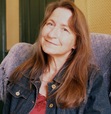Nancy Butts's Blog
November 22, 2016
Treat yourself; free downloads of two wondrous new MG fantasies
Just in time for the holidays, two of my editing clients are staging a joint book launch on November 22nd.
It has been both my privilege and my pleasure to be a guide along the way for these two marvelous middle grade authors, and if you love magical fantasy and stories about worlds-within-worlds, you owe it to yourself and to any young readers in your life to download these books–and indeed, all the titles in both series.
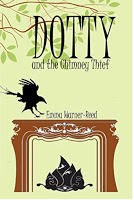 Emma Warner-Reed is launching Book 2 in her Calendar House series about Welsh orphan Dotty Parsons in Dotty and the Chimney Thief. In this tale, Dotty has to track a missing friend, in the process uncovering new clues about herself, her late mother, and the world of magical chimney sweeps hidden inside her Great-Uncle Winchester’s labyrinthine old house in Yorkshire. A perilous new threat menaces them all—and Dotty cannot be sure who is friend and who is foe.
Emma Warner-Reed is launching Book 2 in her Calendar House series about Welsh orphan Dotty Parsons in Dotty and the Chimney Thief. In this tale, Dotty has to track a missing friend, in the process uncovering new clues about herself, her late mother, and the world of magical chimney sweeps hidden inside her Great-Uncle Winchester’s labyrinthine old house in Yorkshire. A perilous new threat menaces them all—and Dotty cannot be sure who is friend and who is foe.
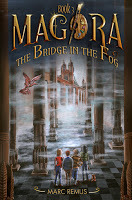 Marc Remus is launching Book 3 in his award-winning Magora series about young Holly O’Flanigan [who coincidentally is also an orphan] in The Bridge in the Fog. This series brings to vivid life the world of Magora—a place where art and magic are one in the same, and where voracious creatures called the Unfinished are both feared and persecuted. In this installment, Holly and her three best friends at Cliffony Academy of the Arts must tread a fine line between helping the Unfinished and potentially unleashing a nightmarish danger upon Magora.
Marc Remus is launching Book 3 in his award-winning Magora series about young Holly O’Flanigan [who coincidentally is also an orphan] in The Bridge in the Fog. This series brings to vivid life the world of Magora—a place where art and magic are one in the same, and where voracious creatures called the Unfinished are both feared and persecuted. In this installment, Holly and her three best friends at Cliffony Academy of the Arts must tread a fine line between helping the Unfinished and potentially unleashing a nightmarish danger upon Magora.
Both series have proven popular on Amazon and I think if you download them, you will see why. And today the downloads are free!
It has been both my privilege and my pleasure to be a guide along the way for these two marvelous middle grade authors, and if you love magical fantasy and stories about worlds-within-worlds, you owe it to yourself and to any young readers in your life to download these books–and indeed, all the titles in both series.
 Emma Warner-Reed is launching Book 2 in her Calendar House series about Welsh orphan Dotty Parsons in Dotty and the Chimney Thief. In this tale, Dotty has to track a missing friend, in the process uncovering new clues about herself, her late mother, and the world of magical chimney sweeps hidden inside her Great-Uncle Winchester’s labyrinthine old house in Yorkshire. A perilous new threat menaces them all—and Dotty cannot be sure who is friend and who is foe.
Emma Warner-Reed is launching Book 2 in her Calendar House series about Welsh orphan Dotty Parsons in Dotty and the Chimney Thief. In this tale, Dotty has to track a missing friend, in the process uncovering new clues about herself, her late mother, and the world of magical chimney sweeps hidden inside her Great-Uncle Winchester’s labyrinthine old house in Yorkshire. A perilous new threat menaces them all—and Dotty cannot be sure who is friend and who is foe.  Marc Remus is launching Book 3 in his award-winning Magora series about young Holly O’Flanigan [who coincidentally is also an orphan] in The Bridge in the Fog. This series brings to vivid life the world of Magora—a place where art and magic are one in the same, and where voracious creatures called the Unfinished are both feared and persecuted. In this installment, Holly and her three best friends at Cliffony Academy of the Arts must tread a fine line between helping the Unfinished and potentially unleashing a nightmarish danger upon Magora.
Marc Remus is launching Book 3 in his award-winning Magora series about young Holly O’Flanigan [who coincidentally is also an orphan] in The Bridge in the Fog. This series brings to vivid life the world of Magora—a place where art and magic are one in the same, and where voracious creatures called the Unfinished are both feared and persecuted. In this installment, Holly and her three best friends at Cliffony Academy of the Arts must tread a fine line between helping the Unfinished and potentially unleashing a nightmarish danger upon Magora.Both series have proven popular on Amazon and I think if you download them, you will see why. And today the downloads are free!
Published on November 22, 2016 05:56
November 17, 2016
Size does matter: keep an eye on manuscript word count
I write long, especially on first drafts—and I am not alone. I see the same dangerous prolixity in the manuscripts of many of my editing clients and writing students. It’s easy to understand why we all do this—we ramble on, blundering about in the uncharted darkness of our own imaginations as we try to find the right path into the heart of our stories. And the more we ramble, the higher our word count creeps.
I’m struggling with that now on my ghost story. Intended as a middle grade novel, at the rate I’m going, I’m worried that it’s going to top out at over 70,000 words. And although it’s true that the first Harry Potter novel was about the same length—77,325 words, to be exact—my projected 70,000 words is still on the long side for a middle grade book.
“Hold on a minute,” you may be thinking. “Are you actually obsessive enough to count every word in 'Sorcerer’s Stone?' "
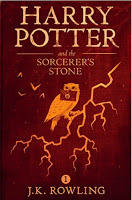
No—but the Accelerated Reader program did. And they have a free tool that you can use to learn just how many words a published book contains.
Why should you care? “My book is special,” I often hear. “Sure, it’s on the long side, but 'So-and-So' is long, too. I’m sure it won’t matter to editors that my picture book is 2,000 words instead of the 500 to 800 they are asking for these days, or that my YA paranormal is 120,000 words when they expect 70,000.”
Don’t delude yourself. Whether we like it or not, size does matter to prospective publishers. The longer the book, the more it costs them to print it, and the more they have to charge for it. And this in turn increases the risk that the book will sell fewer copies due to price resistance on the part of parents, schools, and young readers.
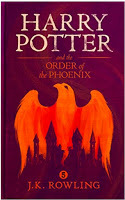 So yes, a proven writer with a successful sales record and a built-in audience of fans frothing at the mouth for the next book can write as long as she wants. That’s why the fifth book in the Potter series, Order of the Phoenix, was a whopping 257,154 words long. But don’t expect any publisher on the planet to give the rest of us mere mortals the same perk.
So yes, a proven writer with a successful sales record and a built-in audience of fans frothing at the mouth for the next book can write as long as she wants. That’s why the fifth book in the Potter series, Order of the Phoenix, was a whopping 257,154 words long. But don’t expect any publisher on the planet to give the rest of us mere mortals the same perk.
To estimate how long your manuscript should be, I think it’s helpful to make up a list of several titles in the same age range for which you are writing, then go to the AR book finder site to see what the word count of those books is.
Do a search for the book you want to check, then click on the blue underlined title in the result that comes up. That will take you to a window where you will find the word count. See what the median word count is for all the books you check, and aim to hit that mark in your own manuscript. For most of us, that means streamlining—for me, too!
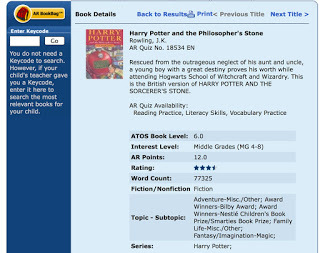
There is of course another compelling reason to streamline your manuscripts: the tighter you write, the more powerful your prose and the more gripping your story will be.
Remember, especially you first-time authors, there seems to be an inverse relationship between the length of a manuscript and its chances of finding a publisher. In other words, the shorter the better.
PS: Many thanks to Katie Davis at the Institute for Writers for sharing this site with me.
I’m struggling with that now on my ghost story. Intended as a middle grade novel, at the rate I’m going, I’m worried that it’s going to top out at over 70,000 words. And although it’s true that the first Harry Potter novel was about the same length—77,325 words, to be exact—my projected 70,000 words is still on the long side for a middle grade book.
“Hold on a minute,” you may be thinking. “Are you actually obsessive enough to count every word in 'Sorcerer’s Stone?' "

No—but the Accelerated Reader program did. And they have a free tool that you can use to learn just how many words a published book contains.
Why should you care? “My book is special,” I often hear. “Sure, it’s on the long side, but 'So-and-So' is long, too. I’m sure it won’t matter to editors that my picture book is 2,000 words instead of the 500 to 800 they are asking for these days, or that my YA paranormal is 120,000 words when they expect 70,000.”
Don’t delude yourself. Whether we like it or not, size does matter to prospective publishers. The longer the book, the more it costs them to print it, and the more they have to charge for it. And this in turn increases the risk that the book will sell fewer copies due to price resistance on the part of parents, schools, and young readers.
 So yes, a proven writer with a successful sales record and a built-in audience of fans frothing at the mouth for the next book can write as long as she wants. That’s why the fifth book in the Potter series, Order of the Phoenix, was a whopping 257,154 words long. But don’t expect any publisher on the planet to give the rest of us mere mortals the same perk.
So yes, a proven writer with a successful sales record and a built-in audience of fans frothing at the mouth for the next book can write as long as she wants. That’s why the fifth book in the Potter series, Order of the Phoenix, was a whopping 257,154 words long. But don’t expect any publisher on the planet to give the rest of us mere mortals the same perk.To estimate how long your manuscript should be, I think it’s helpful to make up a list of several titles in the same age range for which you are writing, then go to the AR book finder site to see what the word count of those books is.
Do a search for the book you want to check, then click on the blue underlined title in the result that comes up. That will take you to a window where you will find the word count. See what the median word count is for all the books you check, and aim to hit that mark in your own manuscript. For most of us, that means streamlining—for me, too!

There is of course another compelling reason to streamline your manuscripts: the tighter you write, the more powerful your prose and the more gripping your story will be.
Remember, especially you first-time authors, there seems to be an inverse relationship between the length of a manuscript and its chances of finding a publisher. In other words, the shorter the better.
PS: Many thanks to Katie Davis at the Institute for Writers for sharing this site with me.
Published on November 17, 2016 09:59
October 13, 2016
Birth announcement for Melissa Roske's debut novel
I am beyond excited this morning: Melissa Roske, one of my "ducklings" as I secretly call my writing students and freelance clients, is celebrating a huge milestone today. Her first novel, KAT GREENE COMES CLEAN, is available for pre-order on Amazon today. I've already ordered two copies, one for her to autograph next June when the book finally comes out, and one for my iPad. you know, so I can carry KAT around with me everywhere.
And to celebrate, she's offering a book giveaway over at Nerdy Book Club, along with an interview with Nathan Duffey, the artist who created the cover.
Days like this I am extra-grateful that I've got two new knees: because now I can really do a happy dance for Melissa. [Which I am doing due to the beat of Justin Timberlake's "Can't Stop the Feeling," in case you're interested.] I was privileged to be there as a kind of midwife, easing Melissa though the first few revisions of this warm and funny and insightful middle grade novel. So it gives me deep joy to know that soon everyone else is going to have the chance to find out for themselves what a fantastic writer she is.
And to celebrate, she's offering a book giveaway over at Nerdy Book Club, along with an interview with Nathan Duffey, the artist who created the cover.
Days like this I am extra-grateful that I've got two new knees: because now I can really do a happy dance for Melissa. [Which I am doing due to the beat of Justin Timberlake's "Can't Stop the Feeling," in case you're interested.] I was privileged to be there as a kind of midwife, easing Melissa though the first few revisions of this warm and funny and insightful middle grade novel. So it gives me deep joy to know that soon everyone else is going to have the chance to find out for themselves what a fantastic writer she is.
Published on October 13, 2016 11:00
July 4, 2016
Happy Fourth of July!
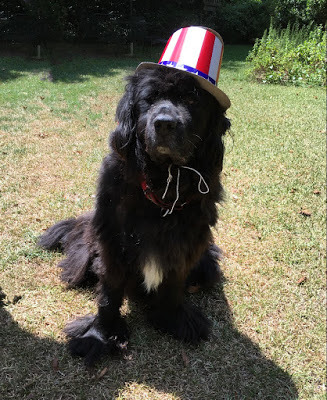 © Photo by Nancy ButtsThis is Yukon, our goofy Newf, gamely posing in his Uncle Sam hat, and wishing everyone a safe and glorious Fourth!
© Photo by Nancy ButtsThis is Yukon, our goofy Newf, gamely posing in his Uncle Sam hat, and wishing everyone a safe and glorious Fourth!
Published on July 04, 2016 10:42
June 5, 2016
Another plug for the serial comma
As my students and clients know, I am a big fan of the serial, or Oxford comma—you know, that punctuation mark that belongs in a list of three or more things before the word and.
lions, tigers, and bears
For such a tiny little squiggle, the serial comma elicits a lot of heated debate. The British writer Lynne Truss defended it beautifully—and hilariously—in the New York Times bestseller Eats, Shoots & Leaves.
If you can't make time to read Truss' book [although really, you should], here is a quick two-minute video by New Yorker copy editor Mary Norris, aka the Comma Queen. I couldn't say it better.
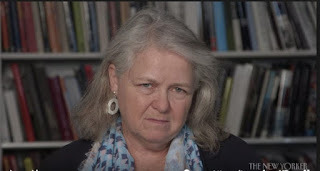 Mary NorrisQueen Mary has a new book that I'm eager to read. It's entitled Between You & Me: Confessions of a Comma Queen. Has anyone else read it yet?
Mary NorrisQueen Mary has a new book that I'm eager to read. It's entitled Between You & Me: Confessions of a Comma Queen. Has anyone else read it yet?
lions, tigers, and bears
For such a tiny little squiggle, the serial comma elicits a lot of heated debate. The British writer Lynne Truss defended it beautifully—and hilariously—in the New York Times bestseller Eats, Shoots & Leaves.
If you can't make time to read Truss' book [although really, you should], here is a quick two-minute video by New Yorker copy editor Mary Norris, aka the Comma Queen. I couldn't say it better.
 Mary NorrisQueen Mary has a new book that I'm eager to read. It's entitled Between You & Me: Confessions of a Comma Queen. Has anyone else read it yet?
Mary NorrisQueen Mary has a new book that I'm eager to read. It's entitled Between You & Me: Confessions of a Comma Queen. Has anyone else read it yet?
Published on June 05, 2016 05:36
November 2, 2015
Read Christine Kohler on keeping an emotions journal [yours truly is quoted]
 Photo by Jacek HalickiIt’s been a long time since that idyllic trip to the Adirondacks: cue the big sigh. Cobwebs are dangling all over this blog since then, however, but before I go into “poor poor pitiful me” mode to make my excuses for that, let me first do a little crowing. My friend and colleague Christine Kohler—author of the YA historical novel No Surrender Soldier—has a new blog post over at UncommonYA that is well worth reading. It’s about how keeping an emotions journal can help writers create more vivid, compelling characters. Christine did me the honor of quoting me on the subject, too, so please head on over and check it out.
Photo by Jacek HalickiIt’s been a long time since that idyllic trip to the Adirondacks: cue the big sigh. Cobwebs are dangling all over this blog since then, however, but before I go into “poor poor pitiful me” mode to make my excuses for that, let me first do a little crowing. My friend and colleague Christine Kohler—author of the YA historical novel No Surrender Soldier—has a new blog post over at UncommonYA that is well worth reading. It’s about how keeping an emotions journal can help writers create more vivid, compelling characters. Christine did me the honor of quoting me on the subject, too, so please head on over and check it out. So other than contributing, in a small way, to that blog post, what has been keeping me silent here? Well, first I had to pay for my month in the mountains kayaking by coming home and working through a mountain of manuscript critiques. It’s work I love, mind you, so I’m not complaining. But it took a while. After which I dashed off to DisneyWorld with my sisters and parents in mid-September. It was the first time I’ve ever been there without kids in tow, and it was fun enjoying it as a grown-up: despite the punishing 104 degree heat. I love the Haunted Mansion!
Then I came home and had a total knee replacement on Sept. 30th: ouch. I’d been dreading this for years, but when you can’t keep up at the Magic Kingdom with your 83-year-old mother who’s had spinal surgery, you know it’s time.
 Not my knee, but close
Not my knee, but closeAccording to everyone, I’m having the most phenomenal recovery in the annals of medicine—so much so that I’ve scheduled the second op for the other knee in early December.
Still, this surgery has knocked the wind out of my sails. What I call “Pain Brain” makes it hard to string three coherent words together into a sentence, much less be creative. So I hope you’ll forgive the silence of the past few months, and the silence to come. But it will all be worth it: and next year I’ll come back stronger than ever.
Published on November 02, 2015 12:18
July 30, 2015
Drifting on a lake of peace���and I've got a chapter in a new book that just came out
 �� Photo by Nancy ButtsThe wandering writer has found her way home at last. I just returned from a nearly-idyllic month away from the suffocating heat and humidity of summer in the South. I spent all that time in one of two mountain ranges: the Blue Ridge in Virginia; and the High Peaks area of the Adirondacks in upstate New York, about an hour from the Canadian border.
�� Photo by Nancy ButtsThe wandering writer has found her way home at last. I just returned from a nearly-idyllic month away from the suffocating heat and humidity of summer in the South. I spent all that time in one of two mountain ranges: the Blue Ridge in Virginia; and the High Peaks area of the Adirondacks in upstate New York, about an hour from the Canadian border. I am lucky enough to have a sister with a camp, as they call it up there, on a lake in the Adirondacks, and that���s where I spent three weeks with my loud and crazy family.
And for those three weeks, I found I was able to live each day for itself, not worrying about what went before or what lay ahead. That is a gift that is rarely given, and I tried to appreciate every moment of it. Being unplugged from email, television, newspapers, and the Internet certainly helped banish the usual stresses of modern everyday life. And so I was able to steep in the refreshingly cool silence, and bask in the bright sunshine like the little brick-colored lizard that lived beneath the outdoor shower. My favorite thing was to get up at dawn to kayak when the lake was like glass, with loons trailing along behind me and a bald eagle soaring overhead.
But all idylls have to come to an end, so now I���m back at my desk and already a little cranky from having to juggle deadlines. Sigh.
 �� Photo by Nancy ButtsHowever, in the days and weeks to come, whenever I need a respite, I think I will be able to dip from that deep lake of peace inside me that I filled up while I was in the mountains.
�� Photo by Nancy ButtsHowever, in the days and weeks to come, whenever I need a respite, I think I will be able to dip from that deep lake of peace inside me that I filled up while I was in the mountains.And I do have some exciting news to share. Chris Eboch, my fellow writer and instructor at the Institute of Children���s Literature, has recently published a new book, You Can Write for Children.
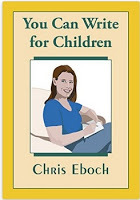 She has kindly included a chapter from me inside! With my permission, she used some of the material from my web series on viewpoint in a chapter in her book on POV. So please, check it out. Chris��� latest book makes an excellent companion to her other guide on writing, Advanced Plotting. That���s a resource I recommend constantly to my students and clients.
She has kindly included a chapter from me inside! With my permission, she used some of the material from my web series on viewpoint in a chapter in her book on POV. So please, check it out. Chris��� latest book makes an excellent companion to her other guide on writing, Advanced Plotting. That���s a resource I recommend constantly to my students and clients.
Published on July 30, 2015 08:23
Drifting on a lake of peace—and I've got a chapter in a new book that just came out
 © Photo by Nancy ButtsThe wandering writer has found her way home at last. I just returned from a nearly-idyllic month away from the suffocating heat and humidity of summer in the South. I spent all that time in one of two mountain ranges: the Blue Ridge in Virginia; and the High Peaks area of the Adirondacks in upstate New York, about an hour from the Canadian border.
© Photo by Nancy ButtsThe wandering writer has found her way home at last. I just returned from a nearly-idyllic month away from the suffocating heat and humidity of summer in the South. I spent all that time in one of two mountain ranges: the Blue Ridge in Virginia; and the High Peaks area of the Adirondacks in upstate New York, about an hour from the Canadian border. I am lucky enough to have a sister with a camp, as they call it up there, on a lake in the Adirondacks, and that’s where I spent three weeks with my loud and crazy family.
And for those three weeks, I found I was able to live each day for itself, not worrying about what went before or what lay ahead. That is a gift that is rarely given, and I tried to appreciate every moment of it. Being unplugged from email, television, newspapers, and the Internet certainly helped banish the usual stresses of modern everyday life. And so I was able to steep in the refreshingly cool silence, and bask in the bright sunshine like the little brick-colored lizard that lived beneath the outdoor shower. My favorite thing was to get up at dawn to kayak when the lake was like glass, with loons trailing along behind me and a bald eagle soaring overhead.
But all idylls have to come to an end, so now I’m back at my desk and already a little cranky from having to juggle deadlines. Sigh.
 © Photo by Nancy ButtsHowever, in the days and weeks to come, whenever I need a respite, I think I will be able to dip from that deep lake of peace inside me that I filled up while I was in the mountains.
© Photo by Nancy ButtsHowever, in the days and weeks to come, whenever I need a respite, I think I will be able to dip from that deep lake of peace inside me that I filled up while I was in the mountains.And I do have some exciting news to share. Chris Eboch, my fellow writer and instructor at the Institute of Children’s Literature, has recently published a new book, You Can Write for Children.
 She has kindly included a chapter from me inside! With my permission, she used some of the material from my web series on viewpoint in a chapter in her book on POV. So please, check it out. Chris’ latest book makes an excellent companion to her other guide on writing, Advanced Plotting. That’s a resource I recommend constantly to my students and clients.
She has kindly included a chapter from me inside! With my permission, she used some of the material from my web series on viewpoint in a chapter in her book on POV. So please, check it out. Chris’ latest book makes an excellent companion to her other guide on writing, Advanced Plotting. That’s a resource I recommend constantly to my students and clients.
Published on July 30, 2015 08:23
May 20, 2015
Choosing the Perfect POV: The Writer���s Quest for the Holy Grail
Note: This is the sixth and last in a series of articles on demystifying viewpoint. The originals will appear first as posts on my Spontaneous Combustion blog, then be archived here on my website as downloadable PDFs.
Finding the perfect form of POV for your book is a lot like the legendary quest for the Holy Grail: one wrong choice can spell your doom. Just ask the characters in the movie Indiana Jones and the Last Crusade.
 Photo by Madder of Grail in Valencia, Spain
Photo by Madder of Grail in Valencia, Spain
In that film, Walter Donovan is a rich American businessman so greedy for eternal life that he collaborates with the Nazis in order to track down the Grail. But the immortal knight who has been guarding the chalice for centuries warns, ���The true Grail will bring you life; the false grail will take it from you.���
Undeterred, Donovan chooses a glitzy gold cup and drains it in one smug gulp. Moments later, his face caves in, his eyeballs shrivel up, and finally his entire body crumbles to dust as he shrieks in agony and terror.
The knight looks on dispassionately and deadpans, ���He chose���poorly.��� Oops!
Donovan���s lethal fate is precisely what you want to avoid when deciding which form of POV to use in your book. You certainly don���t want to make a poor choice that can suck the life out of your carefully-crafted story. But how do you choose wisely?
As I���ve suggested in this series on ���Demystifying Viewpoint,��� one way to understand POV is to think of it this way���which character is wearing the glasses through which readers view all the events of the book?
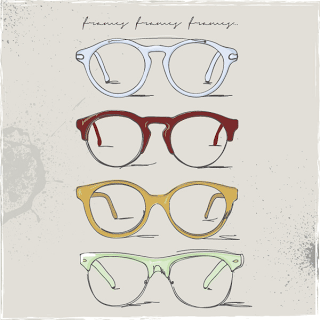 I���ve written about both single and multiple POV, and confessed that I am something of a single POV Puritan; both as a writer and a reader, I prefer books where the narrative glasses sit firmly on the nose of just one character from beginning to end.
I���ve written about both single and multiple POV, and confessed that I am something of a single POV Puritan; both as a writer and a reader, I prefer books where the narrative glasses sit firmly on the nose of just one character from beginning to end.
But I tried to give equal time to multiple POV, since so many fine books, both for kids and adults, are written this way���with the viewpoint glasses switching from one character to another as the book unfolds.
I even wrote about omniscient POV: that form of viewpoint where none of the characters in the book is wearing the viewpoint glasses. Instead, the author reserves those for herself, in one guise or another.
But despite mocking myself a little as a Single POV Puritan, I do realize that this is not the best way to write every novel. It may sound like heresy for me of all people to say this, but some types of books are more effective if readers can experience them through the perspective of multiple characters���or even via the voice of an all-knowing narrator.
So how do you choose which character should wear the viewpoint glasses? How do you decide which form of POV is best for a particular project?
The answer is straightforward: you need to choose the viewpoint technique that will work best to accomplish your literary goals. That���s the fundamental question you need to ask yourself when you first sit down to write. What is your purpose with the book���to scare readers, or to make them laugh? To make them cry or to ignite them with anger? To lead them on a wild adventure, or to make them ponder emotional truths or existential questions? Your choice of viewpoint can help or hinder you in any of those goals.
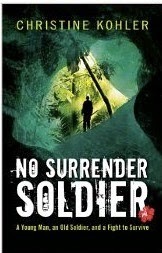 In a blog article on multiple POV, writer Christine Kohler has written eloquently about her reasons for choosing that technique for her YA historical novel, No Surrender Soldier [Merit Press, Fall 2014]. Her thought process can be a model for any writer struggling to make this pivotal decision.
In a blog article on multiple POV, writer Christine Kohler has written eloquently about her reasons for choosing that technique for her YA historical novel, No Surrender Soldier [Merit Press, Fall 2014]. Her thought process can be a model for any writer struggling to make this pivotal decision.
���Genre: Note also that Kohler is writing a historical saga, one that spans three decades. A saga can be historical, covering a broad range of time; geographical, covering a sweeping event that happens in many places at once, such as a war, natural catastrophe, or the zombie apocalypse; or speculative, by which I mean a fantasy or sci fi book that builds an entirely new world [or universe] for readers. As much as it pains a single POV Puritan like myself to say this, such sagas might be too limited, too narrow in their scope, if told from the viewpoint of just one character. Such books work best with either multiple POV or omniscient narration. This way readers can get the full impact of the big event by viewing it through the lenses of several different viewpoint characters, or an all-knowing one.
On the other hand, it might work better to stick with the single POV of your detective if you are writing a mystery, where you want readers to compete with the hero in a race to solve the crime, based on clues that only your detective-protagonist knows.
Single POV can also work well in a book where you want to scare readers, such as a horror or ghost story. In books like this, it���s the unknown that ratchets up the level of fear, so the limited knowledge of a single POV character can be highly effective.
A romance, on the other hand, might be more intriguing if you tell it in the dual POV of both parties in the relationship. [Although this use of POV is common in adult romances, in YA romance a single POV is often used instead.]
��� Audience: Consider your target audience as well. A more complex use of viewpoint���such as rotating through several different POV characters in the course of a novel���can well with older YA readers, but could possibly fall flat with middle graders. Multiple POV can confuse or put off younger readers, who aren���t as experienced with literary techniques and may respond better to a simpler, more direct approach.
I learned this the hard way with a middle grade ghost story that I���m working on. In the first draft, I had seven���count ���em, SEVEN!���viewpoint characters. I was convinced I had the writing chops to pull this off; can you say over-confident and delusional? I was 150 pages into the manuscript before I finally realized that one of my characters had staged a mutiny. A quirky little guy whom I had originally thought was just a minor character turned out to be my real hero, so I had to rewrite the entire blasted book. [The fact that the revision turned out to flow so naturally was my clue that I was doing the right thing; I should have listened to my inner Puritan and stuck with single POV in the first place.]
��� Reader relationship to hero: Perhaps most importantly, consider your protagonist. What kind of relationship do you want readers to have with your hero or heroine? The more strongly you want your readers to identify with your hero, the more likely it is that you���ll want to use single POV, whether in first or limited third person: perhaps even in Deep POV.
On the other hand, if you are writing a book where the main character is an anti-hero, or even a villain, using first-person narration or a tight single third-person POV might be too claustrophobic for readers. Who wants to be stuck in the head of a sadistic bully for an entire book? When you don���t expect readers to like your protagonist, you may want to hold them at a distance by using a more distant form of third person POV, or even omniscient. Or you can minimize the amount of time readers have to spend with your unlikeable protagonist by switching off periodically to other, more sympathetic characters using multiple POV.
��� Literary goals: Finally, don���t forget to consider how the form of POV you choose can help you achieve your other literary goals for the book. Maybe you are writing a story where much of the dramatic impact at the climax comes from a twist that you have cagily been hiding up your sleeve for the entire plot. Your choice of POV is absolutely critical here, because you need to control the information that readers have in order to keep the twist hidden. This is a time where omniscient POV would almost certainly be the wrong choice: the narrator���s all-encompassing knowledge would make it very difficult for you to avoid lying to readers���which isn���t playing fair with them���and yet not reveal too much too soon. Try multiple POV for this kind of book where the twist is vital, so that you can use each POV character to dispense carefully-controlled snippets of information.
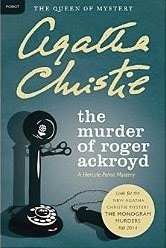 Books with a twist also work well in single POV, especially with a kind of viewpoint character called an unreliable narrator. Edgar Allen Poe is brilliant at this, as is the Golden Age mystery novelist Agatha Christie in the classic The Murder of Roger Ackroyd.
Books with a twist also work well in single POV, especially with a kind of viewpoint character called an unreliable narrator. Edgar Allen Poe is brilliant at this, as is the Golden Age mystery novelist Agatha Christie in the classic The Murder of Roger Ackroyd.
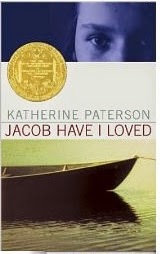 Another masterful example of the unreliable narrator is Louise in Katherine Paterson���s Newbery-winning Jacob Have I Loved. Louise narrates the entire book in first person, and without spoiling the twist, let���s just say that she is wearing green-tinted glasses through the entire novel. Her perspective of events is definitely biased, in a way that misleads readers as to the motivations of other characters, yet without ever lying to them.
Another masterful example of the unreliable narrator is Louise in Katherine Paterson���s Newbery-winning Jacob Have I Loved. Louise narrates the entire book in first person, and without spoiling the twist, let���s just say that she is wearing green-tinted glasses through the entire novel. Her perspective of events is definitely biased, in a way that misleads readers as to the motivations of other characters, yet without ever lying to them.
As you can see, there is a lot to consider when you start a new project and need to decide how you are going to tell your story. You need to think about your genre, your target audience, and the relationship you want readers to have with your main character.
But most of all, you need to have a clear understanding of what your story goals are. When you know what dramatic effects you want to create, what emotional reactions you want to engender, and what themes you want to explore, then you can choose the right pair of POV glasses from your literary optical shop, so that readers will see what you want them to see.
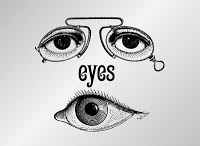
Thank you for joining me in what has turned into a bit of a saga itself: it took me nearly two years to complete all six articles in the series. My hope is that buried somewhere in this torrent of words is advice that can help you make your stories shine.
As the Grail knight said, ���Choose wisely��� when deciding what POV technique to use in order to bring life to your book.
[�� 2015 This article is subject to copyright. Please do not use or reproduce without express written permission from the author.]
Finding the perfect form of POV for your book is a lot like the legendary quest for the Holy Grail: one wrong choice can spell your doom. Just ask the characters in the movie Indiana Jones and the Last Crusade.
 Photo by Madder of Grail in Valencia, Spain
Photo by Madder of Grail in Valencia, SpainIn that film, Walter Donovan is a rich American businessman so greedy for eternal life that he collaborates with the Nazis in order to track down the Grail. But the immortal knight who has been guarding the chalice for centuries warns, ���The true Grail will bring you life; the false grail will take it from you.���
Undeterred, Donovan chooses a glitzy gold cup and drains it in one smug gulp. Moments later, his face caves in, his eyeballs shrivel up, and finally his entire body crumbles to dust as he shrieks in agony and terror.
The knight looks on dispassionately and deadpans, ���He chose���poorly.��� Oops!
Donovan���s lethal fate is precisely what you want to avoid when deciding which form of POV to use in your book. You certainly don���t want to make a poor choice that can suck the life out of your carefully-crafted story. But how do you choose wisely?
As I���ve suggested in this series on ���Demystifying Viewpoint,��� one way to understand POV is to think of it this way���which character is wearing the glasses through which readers view all the events of the book?
 I���ve written about both single and multiple POV, and confessed that I am something of a single POV Puritan; both as a writer and a reader, I prefer books where the narrative glasses sit firmly on the nose of just one character from beginning to end.
I���ve written about both single and multiple POV, and confessed that I am something of a single POV Puritan; both as a writer and a reader, I prefer books where the narrative glasses sit firmly on the nose of just one character from beginning to end. But I tried to give equal time to multiple POV, since so many fine books, both for kids and adults, are written this way���with the viewpoint glasses switching from one character to another as the book unfolds.
I even wrote about omniscient POV: that form of viewpoint where none of the characters in the book is wearing the viewpoint glasses. Instead, the author reserves those for herself, in one guise or another.
But despite mocking myself a little as a Single POV Puritan, I do realize that this is not the best way to write every novel. It may sound like heresy for me of all people to say this, but some types of books are more effective if readers can experience them through the perspective of multiple characters���or even via the voice of an all-knowing narrator.
So how do you choose which character should wear the viewpoint glasses? How do you decide which form of POV is best for a particular project?
The answer is straightforward: you need to choose the viewpoint technique that will work best to accomplish your literary goals. That���s the fundamental question you need to ask yourself when you first sit down to write. What is your purpose with the book���to scare readers, or to make them laugh? To make them cry or to ignite them with anger? To lead them on a wild adventure, or to make them ponder emotional truths or existential questions? Your choice of viewpoint can help or hinder you in any of those goals.
 In a blog article on multiple POV, writer Christine Kohler has written eloquently about her reasons for choosing that technique for her YA historical novel, No Surrender Soldier [Merit Press, Fall 2014]. Her thought process can be a model for any writer struggling to make this pivotal decision.
In a blog article on multiple POV, writer Christine Kohler has written eloquently about her reasons for choosing that technique for her YA historical novel, No Surrender Soldier [Merit Press, Fall 2014]. Her thought process can be a model for any writer struggling to make this pivotal decision. Kohler made a daring choice here; it was a risky move to write even part of a novel aimed at YA readers from the POV of an adult���and an adult who is likely to be viewed as a ���bad guy��� by readers, at least initially. But she had a compelling narrative reason to do so���that���s the key. Then she was careful to mitigate the risks she took by making another wise decision. She kept the sections in her Japanese soldier���s point of view in third person in order to give readers a ���safe zone.��� Using third person means that young readers don���t have to get that close to Seto if they don���t want to; they can still cling to young Kiko as their proxy in the book.
���[The book]���is told in two POVs because the WWII soldier, Isamu Seto, is hiding in the jungle. In 1972, when Kiko���s story takes place, no one knows the soldier exists. If I had told the story in a single POV, then it might have still been suspenseful for Kiko to discover the soldier, but I would not have been able to show the reader how and why Seto hid and survived for 28 years in the jungle. Both POVs are in past tense since this is a historical novel.
���However, 15-year-old Kiko���s POV chapters are in first person, whereas Seto���s chapters are in third person. I wrote it this way so the reader could identify with Kiko, and not Seto. The third person puts a bit more psychic distance between the reader and the character.���
���Genre: Note also that Kohler is writing a historical saga, one that spans three decades. A saga can be historical, covering a broad range of time; geographical, covering a sweeping event that happens in many places at once, such as a war, natural catastrophe, or the zombie apocalypse; or speculative, by which I mean a fantasy or sci fi book that builds an entirely new world [or universe] for readers. As much as it pains a single POV Puritan like myself to say this, such sagas might be too limited, too narrow in their scope, if told from the viewpoint of just one character. Such books work best with either multiple POV or omniscient narration. This way readers can get the full impact of the big event by viewing it through the lenses of several different viewpoint characters, or an all-knowing one.
On the other hand, it might work better to stick with the single POV of your detective if you are writing a mystery, where you want readers to compete with the hero in a race to solve the crime, based on clues that only your detective-protagonist knows.
Single POV can also work well in a book where you want to scare readers, such as a horror or ghost story. In books like this, it���s the unknown that ratchets up the level of fear, so the limited knowledge of a single POV character can be highly effective.
A romance, on the other hand, might be more intriguing if you tell it in the dual POV of both parties in the relationship. [Although this use of POV is common in adult romances, in YA romance a single POV is often used instead.]
��� Audience: Consider your target audience as well. A more complex use of viewpoint���such as rotating through several different POV characters in the course of a novel���can well with older YA readers, but could possibly fall flat with middle graders. Multiple POV can confuse or put off younger readers, who aren���t as experienced with literary techniques and may respond better to a simpler, more direct approach.
I learned this the hard way with a middle grade ghost story that I���m working on. In the first draft, I had seven���count ���em, SEVEN!���viewpoint characters. I was convinced I had the writing chops to pull this off; can you say over-confident and delusional? I was 150 pages into the manuscript before I finally realized that one of my characters had staged a mutiny. A quirky little guy whom I had originally thought was just a minor character turned out to be my real hero, so I had to rewrite the entire blasted book. [The fact that the revision turned out to flow so naturally was my clue that I was doing the right thing; I should have listened to my inner Puritan and stuck with single POV in the first place.]
��� Reader relationship to hero: Perhaps most importantly, consider your protagonist. What kind of relationship do you want readers to have with your hero or heroine? The more strongly you want your readers to identify with your hero, the more likely it is that you���ll want to use single POV, whether in first or limited third person: perhaps even in Deep POV.
On the other hand, if you are writing a book where the main character is an anti-hero, or even a villain, using first-person narration or a tight single third-person POV might be too claustrophobic for readers. Who wants to be stuck in the head of a sadistic bully for an entire book? When you don���t expect readers to like your protagonist, you may want to hold them at a distance by using a more distant form of third person POV, or even omniscient. Or you can minimize the amount of time readers have to spend with your unlikeable protagonist by switching off periodically to other, more sympathetic characters using multiple POV.
��� Literary goals: Finally, don���t forget to consider how the form of POV you choose can help you achieve your other literary goals for the book. Maybe you are writing a story where much of the dramatic impact at the climax comes from a twist that you have cagily been hiding up your sleeve for the entire plot. Your choice of POV is absolutely critical here, because you need to control the information that readers have in order to keep the twist hidden. This is a time where omniscient POV would almost certainly be the wrong choice: the narrator���s all-encompassing knowledge would make it very difficult for you to avoid lying to readers���which isn���t playing fair with them���and yet not reveal too much too soon. Try multiple POV for this kind of book where the twist is vital, so that you can use each POV character to dispense carefully-controlled snippets of information.
 Books with a twist also work well in single POV, especially with a kind of viewpoint character called an unreliable narrator. Edgar Allen Poe is brilliant at this, as is the Golden Age mystery novelist Agatha Christie in the classic The Murder of Roger Ackroyd.
Books with a twist also work well in single POV, especially with a kind of viewpoint character called an unreliable narrator. Edgar Allen Poe is brilliant at this, as is the Golden Age mystery novelist Agatha Christie in the classic The Murder of Roger Ackroyd.  Another masterful example of the unreliable narrator is Louise in Katherine Paterson���s Newbery-winning Jacob Have I Loved. Louise narrates the entire book in first person, and without spoiling the twist, let���s just say that she is wearing green-tinted glasses through the entire novel. Her perspective of events is definitely biased, in a way that misleads readers as to the motivations of other characters, yet without ever lying to them.
Another masterful example of the unreliable narrator is Louise in Katherine Paterson���s Newbery-winning Jacob Have I Loved. Louise narrates the entire book in first person, and without spoiling the twist, let���s just say that she is wearing green-tinted glasses through the entire novel. Her perspective of events is definitely biased, in a way that misleads readers as to the motivations of other characters, yet without ever lying to them. As you can see, there is a lot to consider when you start a new project and need to decide how you are going to tell your story. You need to think about your genre, your target audience, and the relationship you want readers to have with your main character.
But most of all, you need to have a clear understanding of what your story goals are. When you know what dramatic effects you want to create, what emotional reactions you want to engender, and what themes you want to explore, then you can choose the right pair of POV glasses from your literary optical shop, so that readers will see what you want them to see.

Thank you for joining me in what has turned into a bit of a saga itself: it took me nearly two years to complete all six articles in the series. My hope is that buried somewhere in this torrent of words is advice that can help you make your stories shine.
As the Grail knight said, ���Choose wisely��� when deciding what POV technique to use in order to bring life to your book.
[�� 2015 This article is subject to copyright. Please do not use or reproduce without express written permission from the author.]
Published on May 20, 2015 11:48
Choosing the Perfect POV: The Writer’s Quest for the Holy Grail
Note: This is the sixth and last in a series of articles on demystifying viewpoint. The originals will appear first as posts on my Spontaneous Combustion blog, then be archived here on my website as downloadable PDFs.
Finding the perfect form of POV for your book is a lot like the legendary quest for the Holy Grail: one wrong choice can spell your doom. Just ask the characters in the movie Indiana Jones and the Last Crusade.
 Photo by Madder of Grail in Valencia, Spain
Photo by Madder of Grail in Valencia, Spain
In that film, Walter Donovan is a rich American businessman so greedy for eternal life that he collaborates with the Nazis in order to track down the Grail. But the immortal knight who has been guarding the chalice for centuries warns, “The true Grail will bring you life; the false grail will take it from you.”
Undeterred, Donovan chooses a glitzy gold cup and drains it in one smug gulp. Moments later, his face caves in, his eyeballs shrivel up, and finally his entire body crumbles to dust as he shrieks in agony and terror.
The knight looks on dispassionately and deadpans, “He chose…poorly.” Oops!
Donovan’s lethal fate is precisely what you want to avoid when deciding which form of POV to use in your book. You certainly don’t want to make a poor choice that can suck the life out of your carefully-crafted story. But how do you choose wisely?
As I’ve suggested in this series on “Demystifying Viewpoint,” one way to understand POV is to think of it this way—which character is wearing the glasses through which readers view all the events of the book?
 I’ve written about both single and multiple POV, and confessed that I am something of a single POV Puritan; both as a writer and a reader, I prefer books where the narrative glasses sit firmly on the nose of just one character from beginning to end.
I’ve written about both single and multiple POV, and confessed that I am something of a single POV Puritan; both as a writer and a reader, I prefer books where the narrative glasses sit firmly on the nose of just one character from beginning to end.
But I tried to give equal time to multiple POV, since so many fine books, both for kids and adults, are written this way—with the viewpoint glasses switching from one character to another as the book unfolds.
I even wrote about omniscient POV: that form of viewpoint where none of the characters in the book is wearing the viewpoint glasses. Instead, the author reserves those for herself, in one guise or another.
But despite mocking myself a little as a Single POV Puritan, I do realize that this is not the best way to write every novel. It may sound like heresy for me of all people to say this, but some types of books are more effective if readers can experience them through the perspective of multiple characters—or even via the voice of an all-knowing narrator.
So how do you choose which character should wear the viewpoint glasses? How do you decide which form of POV is best for a particular project?
The answer is straightforward: you need to choose the viewpoint technique that will work best to accomplish your literary goals. That’s the fundamental question you need to ask yourself when you first sit down to write. What is your purpose with the book—to scare readers, or to make them laugh? To make them cry or to ignite them with anger? To lead them on a wild adventure, or to make them ponder emotional truths or existential questions? Your choice of viewpoint can help or hinder you in any of those goals.
 In a blog article on multiple POV, writer Christine Kohler has written eloquently about her reasons for choosing that technique for her YA historical novel, No Surrender Soldier [Merit Press, Fall 2014]. Her thought process can be a model for any writer struggling to make this pivotal decision.
In a blog article on multiple POV, writer Christine Kohler has written eloquently about her reasons for choosing that technique for her YA historical novel, No Surrender Soldier [Merit Press, Fall 2014]. Her thought process can be a model for any writer struggling to make this pivotal decision.
•Genre: Note also that Kohler is writing a historical saga, one that spans three decades. A saga can be historical, covering a broad range of time; geographical, covering a sweeping event that happens in many places at once, such as a war, natural catastrophe, or the zombie apocalypse; or speculative, by which I mean a fantasy or sci fi book that builds an entirely new world [or universe] for readers. As much as it pains a single POV Puritan like myself to say this, such sagas might be too limited, too narrow in their scope, if told from the viewpoint of just one character. Such books work best with either multiple POV or omniscient narration. This way readers can get the full impact of the big event by viewing it through the lenses of several different viewpoint characters, or an all-knowing one.
On the other hand, it might work better to stick with the single POV of your detective if you are writing a mystery, where you want readers to compete with the hero in a race to solve the crime, based on clues that only your detective-protagonist knows.
Single POV can also work well in a book where you want to scare readers, such as a horror or ghost story. In books like this, it’s the unknown that ratchets up the level of fear, so the limited knowledge of a single POV character can be highly effective.
A romance, on the other hand, might be more intriguing if you tell it in the dual POV of both parties in the relationship. [Although this use of POV is common in adult romances, in YA romance a single POV is often used instead.]
• Audience: Consider your target audience as well. A more complex use of viewpoint—such as rotating through several different POV characters in the course of a novel—can well with older YA readers, but could possibly fall flat with middle graders. Multiple POV can confuse or put off younger readers, who aren’t as experienced with literary techniques and may respond better to a simpler, more direct approach.
I learned this the hard way with a middle grade ghost story that I’m working on. In the first draft, I had seven—count ‘em, SEVEN!—viewpoint characters. I was convinced I had the writing chops to pull this off; can you say over-confident and delusional? I was 150 pages into the manuscript before I finally realized that one of my characters had staged a mutiny. A quirky little guy whom I had originally thought was just a minor character turned out to be my real hero, so I had to rewrite the entire blasted book. [The fact that the revision turned out to flow so naturally was my clue that I was doing the right thing; I should have listened to my inner Puritan and stuck with single POV in the first place.]
• Reader relationship to hero: Perhaps most importantly, consider your protagonist. What kind of relationship do you want readers to have with your hero or heroine? The more strongly you want your readers to identify with your hero, the more likely it is that you’ll want to use single POV, whether in first or limited third person: perhaps even in Deep POV.
On the other hand, if you are writing a book where the main character is an anti-hero, or even a villain, using first-person narration or a tight single third-person POV might be too claustrophobic for readers. Who wants to be stuck in the head of a sadistic bully for an entire book? When you don’t expect readers to like your protagonist, you may want to hold them at a distance by using a more distant form of third person POV, or even omniscient. Or you can minimize the amount of time readers have to spend with your unlikeable protagonist by switching off periodically to other, more sympathetic characters using multiple POV.
• Literary goals: Finally, don’t forget to consider how the form of POV you choose can help you achieve your other literary goals for the book. Maybe you are writing a story where much of the dramatic impact at the climax comes from a twist that you have cagily been hiding up your sleeve for the entire plot. Your choice of POV is absolutely critical here, because you need to control the information that readers have in order to keep the twist hidden. This is a time where omniscient POV would almost certainly be the wrong choice: the narrator’s all-encompassing knowledge would make it very difficult for you to avoid lying to readers–which isn’t playing fair with them—and yet not reveal too much too soon. Try multiple POV for this kind of book where the twist is vital, so that you can use each POV character to dispense carefully-controlled snippets of information.
 Books with a twist also work well in single POV, especially with a kind of viewpoint character called an unreliable narrator. Edgar Allen Poe is brilliant at this, as is the Golden Age mystery novelist Agatha Christie in the classic The Murder of Roger Ackroyd.
Books with a twist also work well in single POV, especially with a kind of viewpoint character called an unreliable narrator. Edgar Allen Poe is brilliant at this, as is the Golden Age mystery novelist Agatha Christie in the classic The Murder of Roger Ackroyd.
 Another masterful example of the unreliable narrator is Louise in Katherine Paterson’s Newbery-winning Jacob Have I Loved. Louise narrates the entire book in first person, and without spoiling the twist, let’s just say that she is wearing green-tinted glasses through the entire novel. Her perspective of events is definitely biased, in a way that misleads readers as to the motivations of other characters, yet without ever lying to them.
Another masterful example of the unreliable narrator is Louise in Katherine Paterson’s Newbery-winning Jacob Have I Loved. Louise narrates the entire book in first person, and without spoiling the twist, let’s just say that she is wearing green-tinted glasses through the entire novel. Her perspective of events is definitely biased, in a way that misleads readers as to the motivations of other characters, yet without ever lying to them.
As you can see, there is a lot to consider when you start a new project and need to decide how you are going to tell your story. You need to think about your genre, your target audience, and the relationship you want readers to have with your main character.
But most of all, you need to have a clear understanding of what your story goals are. When you know what dramatic effects you want to create, what emotional reactions you want to engender, and what themes you want to explore, then you can choose the right pair of POV glasses from your literary optical shop, so that readers will see what you want them to see.

Thank you for joining me in what has turned into a bit of a saga itself: it took me nearly two years to complete all six articles in the series. My hope is that buried somewhere in this torrent of words is advice that can help you make your stories shine.
As the Grail knight said, “Choose wisely” when deciding what POV technique to use in order to bring life to your book.
[© 2015 This article is subject to copyright. Please do not use or reproduce without express written permission from the author.]
Finding the perfect form of POV for your book is a lot like the legendary quest for the Holy Grail: one wrong choice can spell your doom. Just ask the characters in the movie Indiana Jones and the Last Crusade.
 Photo by Madder of Grail in Valencia, Spain
Photo by Madder of Grail in Valencia, SpainIn that film, Walter Donovan is a rich American businessman so greedy for eternal life that he collaborates with the Nazis in order to track down the Grail. But the immortal knight who has been guarding the chalice for centuries warns, “The true Grail will bring you life; the false grail will take it from you.”
Undeterred, Donovan chooses a glitzy gold cup and drains it in one smug gulp. Moments later, his face caves in, his eyeballs shrivel up, and finally his entire body crumbles to dust as he shrieks in agony and terror.
The knight looks on dispassionately and deadpans, “He chose…poorly.” Oops!
Donovan’s lethal fate is precisely what you want to avoid when deciding which form of POV to use in your book. You certainly don’t want to make a poor choice that can suck the life out of your carefully-crafted story. But how do you choose wisely?
As I’ve suggested in this series on “Demystifying Viewpoint,” one way to understand POV is to think of it this way—which character is wearing the glasses through which readers view all the events of the book?
 I’ve written about both single and multiple POV, and confessed that I am something of a single POV Puritan; both as a writer and a reader, I prefer books where the narrative glasses sit firmly on the nose of just one character from beginning to end.
I’ve written about both single and multiple POV, and confessed that I am something of a single POV Puritan; both as a writer and a reader, I prefer books where the narrative glasses sit firmly on the nose of just one character from beginning to end. But I tried to give equal time to multiple POV, since so many fine books, both for kids and adults, are written this way—with the viewpoint glasses switching from one character to another as the book unfolds.
I even wrote about omniscient POV: that form of viewpoint where none of the characters in the book is wearing the viewpoint glasses. Instead, the author reserves those for herself, in one guise or another.
But despite mocking myself a little as a Single POV Puritan, I do realize that this is not the best way to write every novel. It may sound like heresy for me of all people to say this, but some types of books are more effective if readers can experience them through the perspective of multiple characters—or even via the voice of an all-knowing narrator.
So how do you choose which character should wear the viewpoint glasses? How do you decide which form of POV is best for a particular project?
The answer is straightforward: you need to choose the viewpoint technique that will work best to accomplish your literary goals. That’s the fundamental question you need to ask yourself when you first sit down to write. What is your purpose with the book—to scare readers, or to make them laugh? To make them cry or to ignite them with anger? To lead them on a wild adventure, or to make them ponder emotional truths or existential questions? Your choice of viewpoint can help or hinder you in any of those goals.
 In a blog article on multiple POV, writer Christine Kohler has written eloquently about her reasons for choosing that technique for her YA historical novel, No Surrender Soldier [Merit Press, Fall 2014]. Her thought process can be a model for any writer struggling to make this pivotal decision.
In a blog article on multiple POV, writer Christine Kohler has written eloquently about her reasons for choosing that technique for her YA historical novel, No Surrender Soldier [Merit Press, Fall 2014]. Her thought process can be a model for any writer struggling to make this pivotal decision. “[The book]…is told in two POVs because the WWII soldier, Isamu Seto, is hiding in the jungle. In 1972, when Kiko’s story takes place, no one knows the soldier exists. If I had told the story in a single POV, then it might have still been suspenseful for Kiko to discover the soldier, but I would not have been able to show the reader how and why Seto hid and survived for 28 years in the jungle. Both POVs are in past tense since this is a historical novel.Kohler made a daring choice here; it was a risky move to write even part of a novel aimed at YA readers from the POV of an adult—and an adult who is likely to be viewed as a “bad guy” by readers, at least initially. But she had a compelling narrative reason to do so—that’s the key. Then she was careful to mitigate the risks she took by making another wise decision. She kept the sections in her Japanese soldier’s point of view in third person in order to give readers a “safe zone.” Using third person means that young readers don’t have to get that close to Seto if they don’t want to; they can still cling to young Kiko as their proxy in the book.
“However, 15-year-old Kiko’s POV chapters are in first person, whereas Seto’s chapters are in third person. I wrote it this way so the reader could identify with Kiko, and not Seto. The third person puts a bit more psychic distance between the reader and the character.”
•Genre: Note also that Kohler is writing a historical saga, one that spans three decades. A saga can be historical, covering a broad range of time; geographical, covering a sweeping event that happens in many places at once, such as a war, natural catastrophe, or the zombie apocalypse; or speculative, by which I mean a fantasy or sci fi book that builds an entirely new world [or universe] for readers. As much as it pains a single POV Puritan like myself to say this, such sagas might be too limited, too narrow in their scope, if told from the viewpoint of just one character. Such books work best with either multiple POV or omniscient narration. This way readers can get the full impact of the big event by viewing it through the lenses of several different viewpoint characters, or an all-knowing one.
On the other hand, it might work better to stick with the single POV of your detective if you are writing a mystery, where you want readers to compete with the hero in a race to solve the crime, based on clues that only your detective-protagonist knows.
Single POV can also work well in a book where you want to scare readers, such as a horror or ghost story. In books like this, it’s the unknown that ratchets up the level of fear, so the limited knowledge of a single POV character can be highly effective.
A romance, on the other hand, might be more intriguing if you tell it in the dual POV of both parties in the relationship. [Although this use of POV is common in adult romances, in YA romance a single POV is often used instead.]
• Audience: Consider your target audience as well. A more complex use of viewpoint—such as rotating through several different POV characters in the course of a novel—can well with older YA readers, but could possibly fall flat with middle graders. Multiple POV can confuse or put off younger readers, who aren’t as experienced with literary techniques and may respond better to a simpler, more direct approach.
I learned this the hard way with a middle grade ghost story that I’m working on. In the first draft, I had seven—count ‘em, SEVEN!—viewpoint characters. I was convinced I had the writing chops to pull this off; can you say over-confident and delusional? I was 150 pages into the manuscript before I finally realized that one of my characters had staged a mutiny. A quirky little guy whom I had originally thought was just a minor character turned out to be my real hero, so I had to rewrite the entire blasted book. [The fact that the revision turned out to flow so naturally was my clue that I was doing the right thing; I should have listened to my inner Puritan and stuck with single POV in the first place.]
• Reader relationship to hero: Perhaps most importantly, consider your protagonist. What kind of relationship do you want readers to have with your hero or heroine? The more strongly you want your readers to identify with your hero, the more likely it is that you’ll want to use single POV, whether in first or limited third person: perhaps even in Deep POV.
On the other hand, if you are writing a book where the main character is an anti-hero, or even a villain, using first-person narration or a tight single third-person POV might be too claustrophobic for readers. Who wants to be stuck in the head of a sadistic bully for an entire book? When you don’t expect readers to like your protagonist, you may want to hold them at a distance by using a more distant form of third person POV, or even omniscient. Or you can minimize the amount of time readers have to spend with your unlikeable protagonist by switching off periodically to other, more sympathetic characters using multiple POV.
• Literary goals: Finally, don’t forget to consider how the form of POV you choose can help you achieve your other literary goals for the book. Maybe you are writing a story where much of the dramatic impact at the climax comes from a twist that you have cagily been hiding up your sleeve for the entire plot. Your choice of POV is absolutely critical here, because you need to control the information that readers have in order to keep the twist hidden. This is a time where omniscient POV would almost certainly be the wrong choice: the narrator’s all-encompassing knowledge would make it very difficult for you to avoid lying to readers–which isn’t playing fair with them—and yet not reveal too much too soon. Try multiple POV for this kind of book where the twist is vital, so that you can use each POV character to dispense carefully-controlled snippets of information.
 Books with a twist also work well in single POV, especially with a kind of viewpoint character called an unreliable narrator. Edgar Allen Poe is brilliant at this, as is the Golden Age mystery novelist Agatha Christie in the classic The Murder of Roger Ackroyd.
Books with a twist also work well in single POV, especially with a kind of viewpoint character called an unreliable narrator. Edgar Allen Poe is brilliant at this, as is the Golden Age mystery novelist Agatha Christie in the classic The Murder of Roger Ackroyd.  Another masterful example of the unreliable narrator is Louise in Katherine Paterson’s Newbery-winning Jacob Have I Loved. Louise narrates the entire book in first person, and without spoiling the twist, let’s just say that she is wearing green-tinted glasses through the entire novel. Her perspective of events is definitely biased, in a way that misleads readers as to the motivations of other characters, yet without ever lying to them.
Another masterful example of the unreliable narrator is Louise in Katherine Paterson’s Newbery-winning Jacob Have I Loved. Louise narrates the entire book in first person, and without spoiling the twist, let’s just say that she is wearing green-tinted glasses through the entire novel. Her perspective of events is definitely biased, in a way that misleads readers as to the motivations of other characters, yet without ever lying to them. As you can see, there is a lot to consider when you start a new project and need to decide how you are going to tell your story. You need to think about your genre, your target audience, and the relationship you want readers to have with your main character.
But most of all, you need to have a clear understanding of what your story goals are. When you know what dramatic effects you want to create, what emotional reactions you want to engender, and what themes you want to explore, then you can choose the right pair of POV glasses from your literary optical shop, so that readers will see what you want them to see.

Thank you for joining me in what has turned into a bit of a saga itself: it took me nearly two years to complete all six articles in the series. My hope is that buried somewhere in this torrent of words is advice that can help you make your stories shine.
As the Grail knight said, “Choose wisely” when deciding what POV technique to use in order to bring life to your book.
[© 2015 This article is subject to copyright. Please do not use or reproduce without express written permission from the author.]
Published on May 20, 2015 11:48

